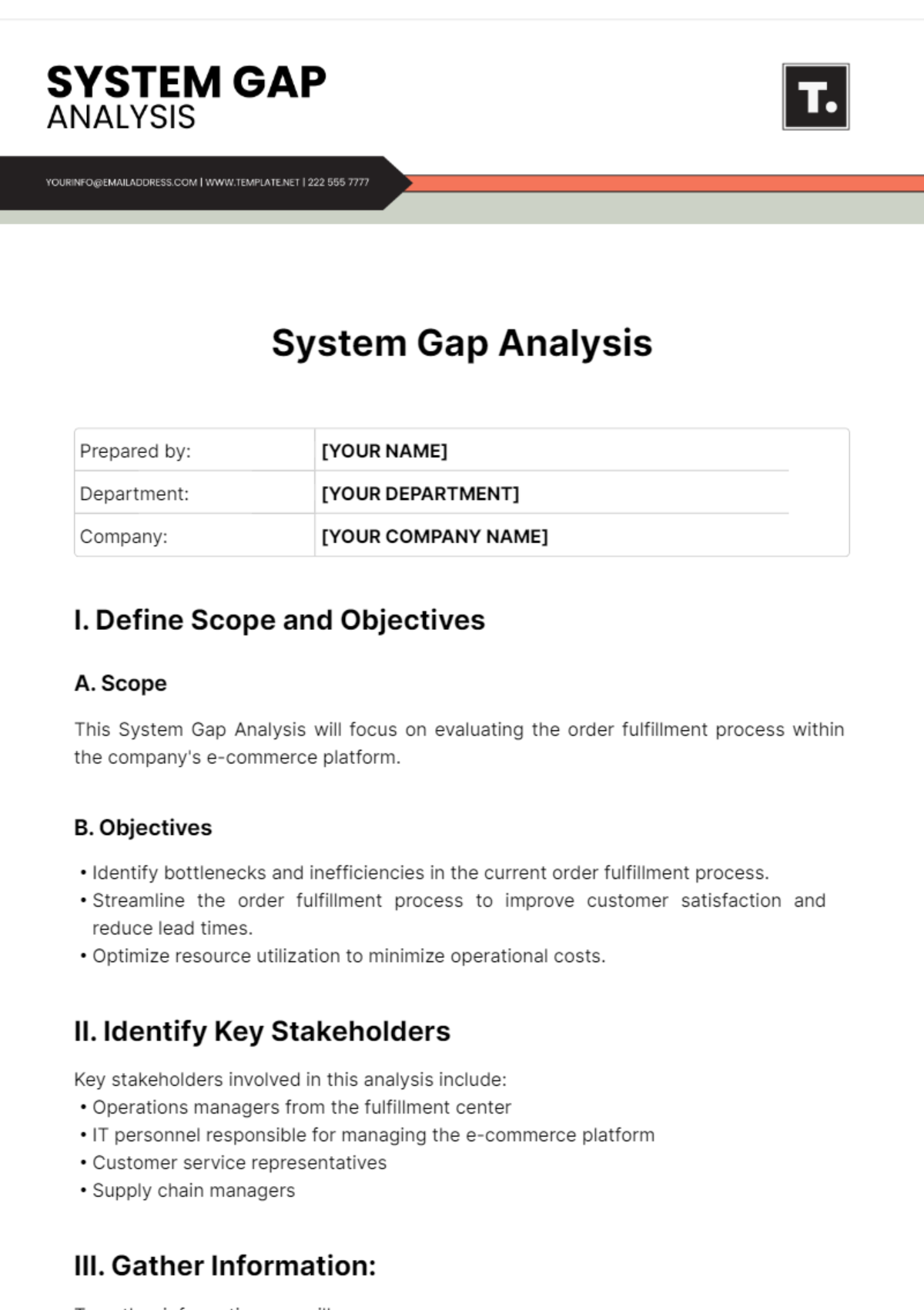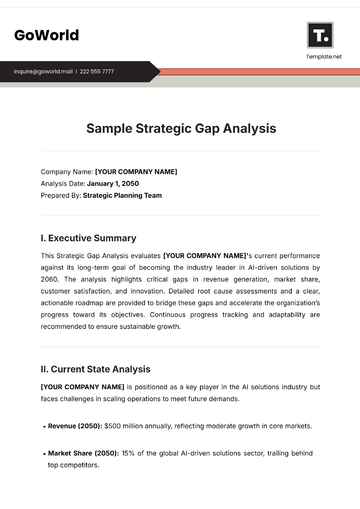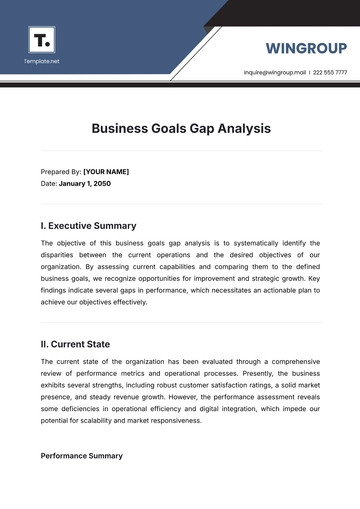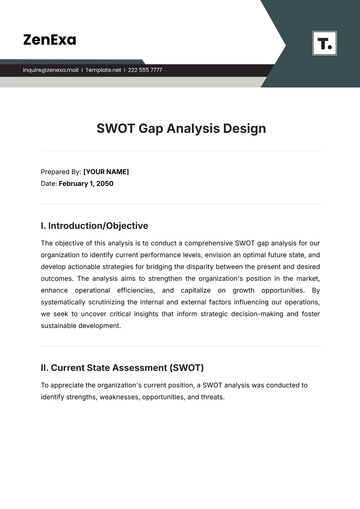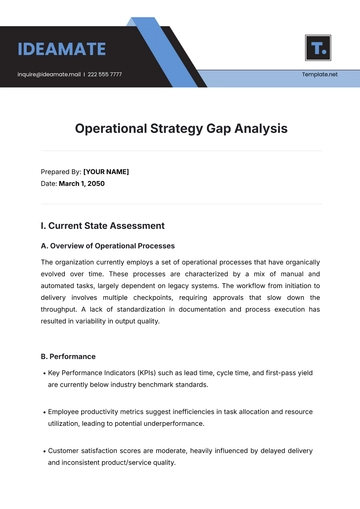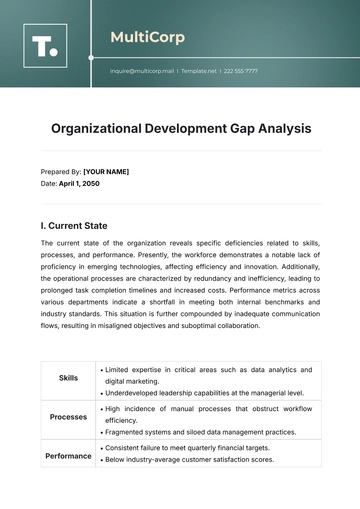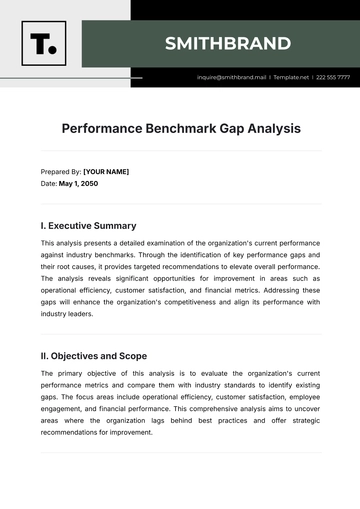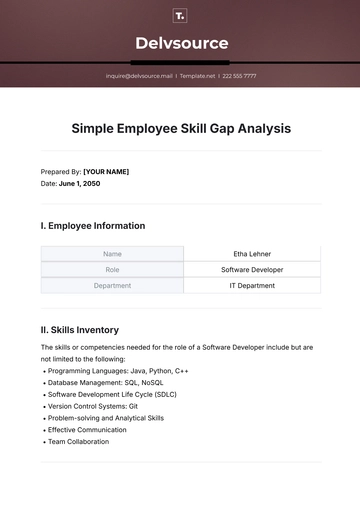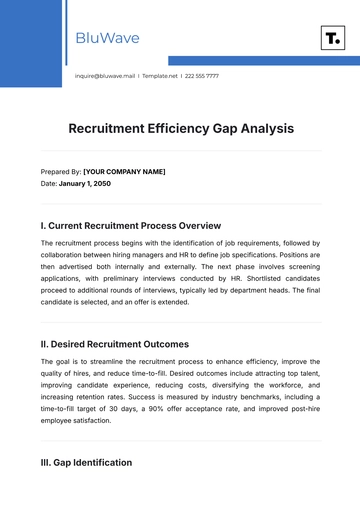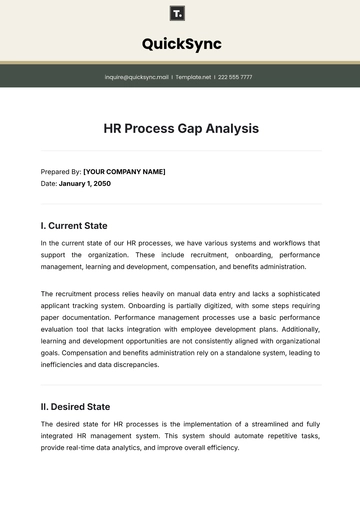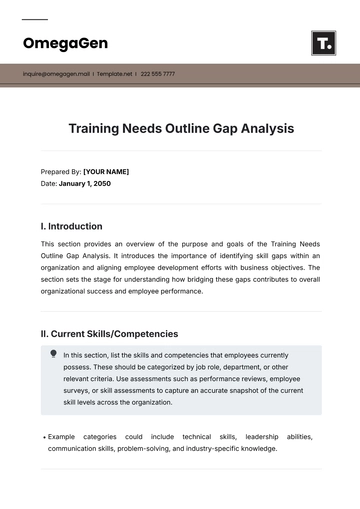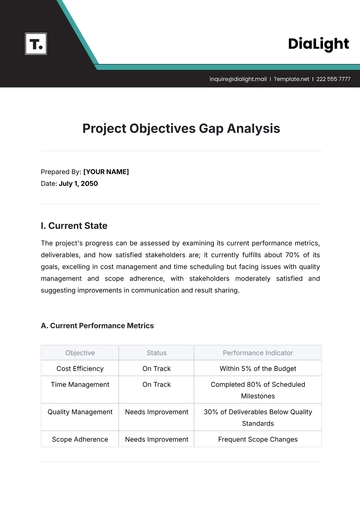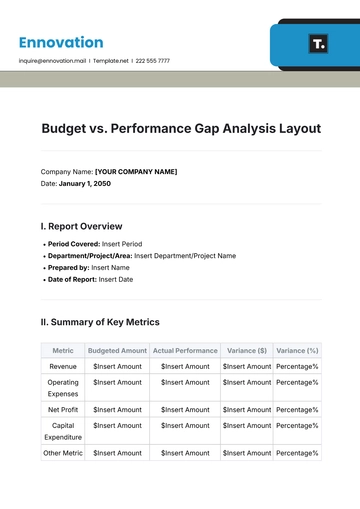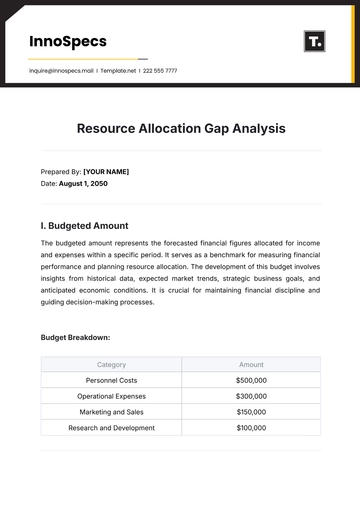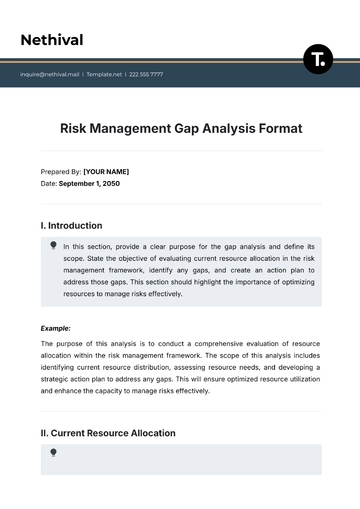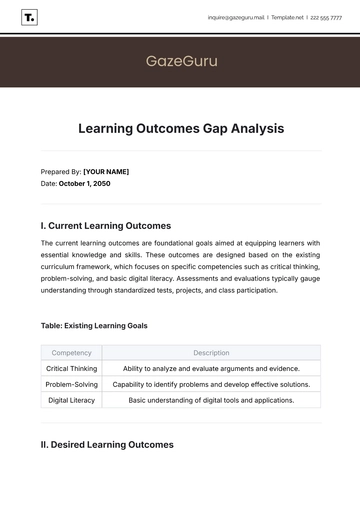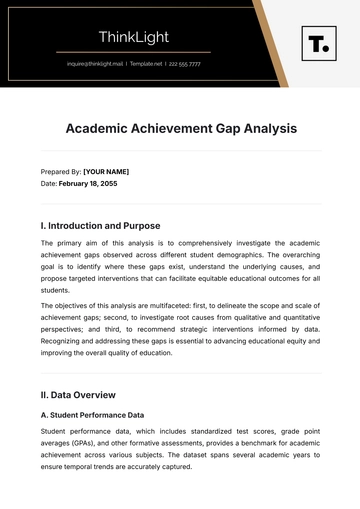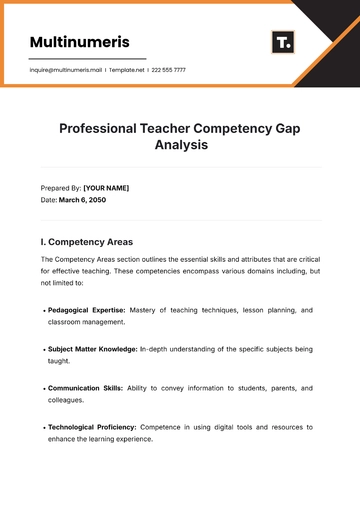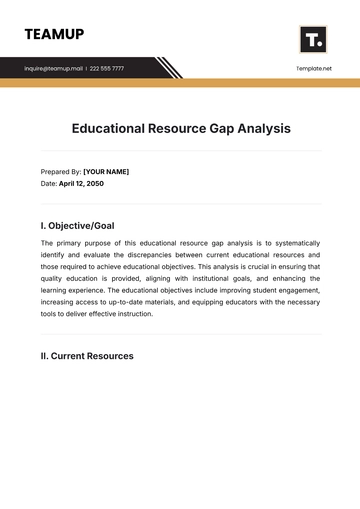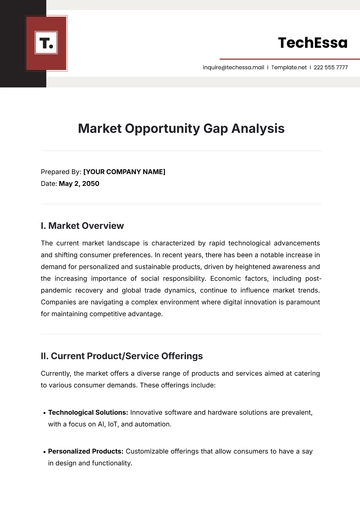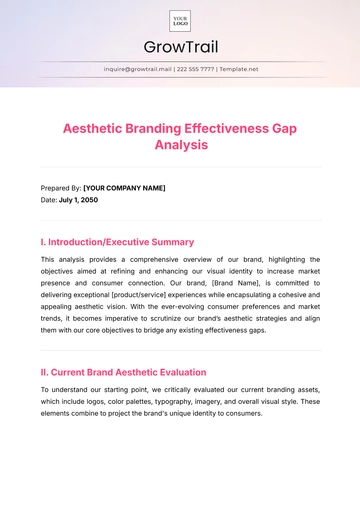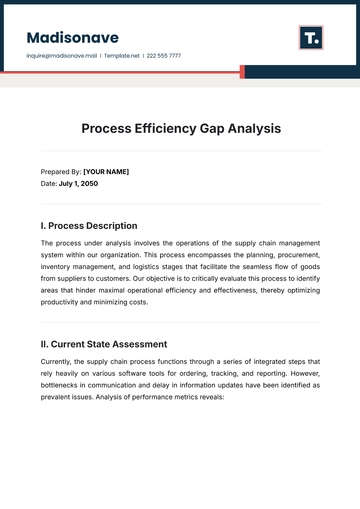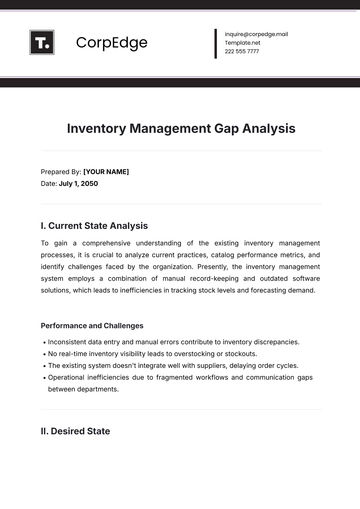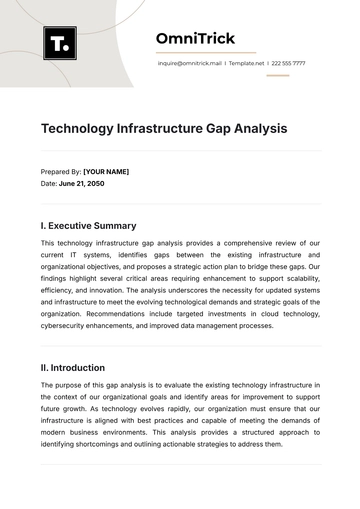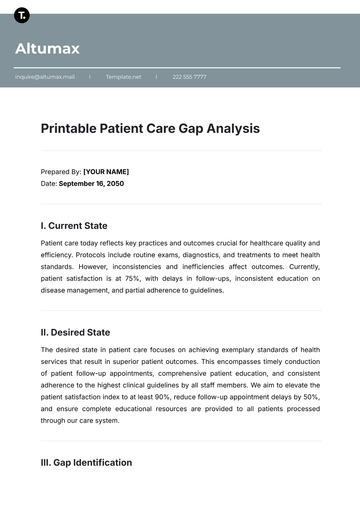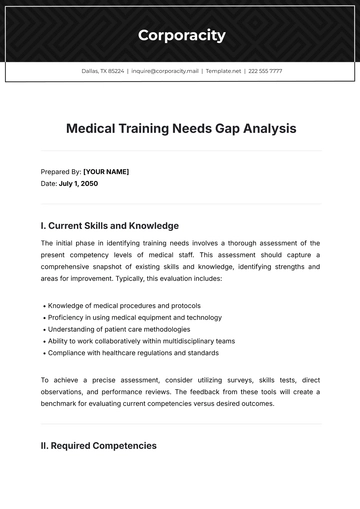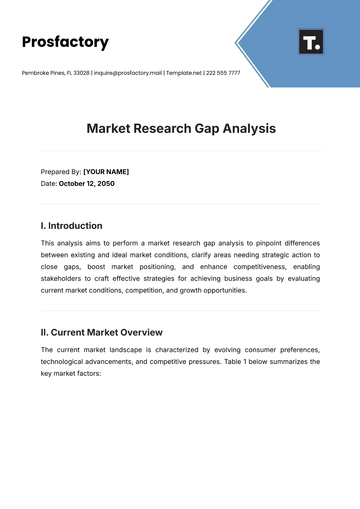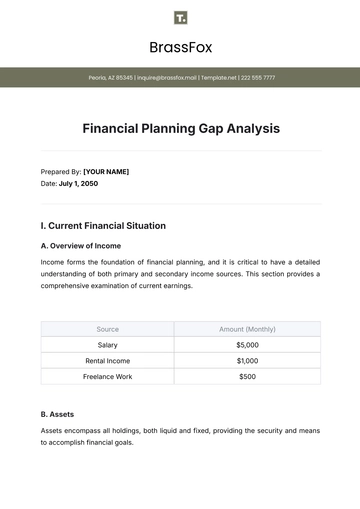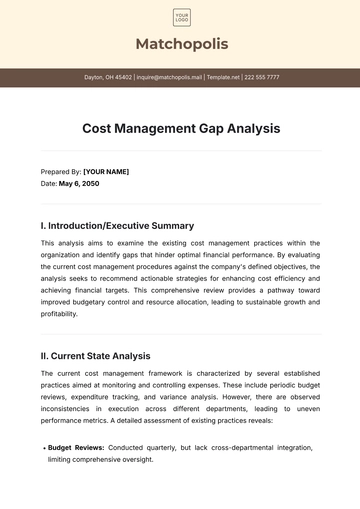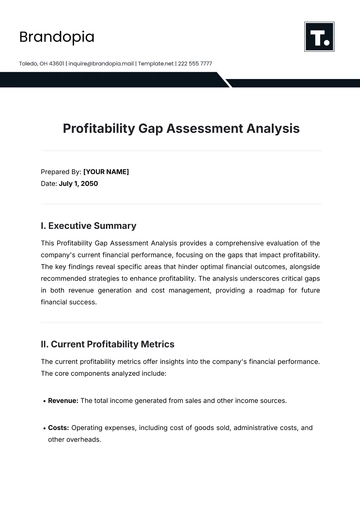System Gap Analysis
Prepared by: | [YOUR NAME] |
Department: | [YOUR DEPARTMENT] |
Company: | [YOUR COMPANY NAME] |
I. Define Scope and Objectives
A. Scope
This System Gap Analysis will focus on evaluating the order fulfillment process within the company's e-commerce platform.
B. Objectives
Identify bottlenecks and inefficiencies in the current order fulfillment process.
Streamline the order fulfillment process to improve customer satisfaction and reduce lead times.
Optimize resource utilization to minimize operational costs.
II. Identify Key Stakeholders
Key stakeholders involved in this analysis include:
Operations managers from the fulfillment center
IT personnel responsible for managing the e-commerce platform
Customer service representatives
Supply chain managers
III. Gather Information:
To gather information, we will:
Review existing documentation related to the order fulfillment process, including standard operating procedures (SOPs) and workflow diagrams.
Conduct interviews with operations managers, IT personnel, and customer service representatives to gain insights into pain points and challenges.
Analyze performance data, such as order processing times and error rates.
IV. Map Current Processes
Table 1: Current Order Fulfillment Process Map
Step | Description | Responsible Party | Duration |
|---|
1 | Order received | Customer Service | 5 mins |
2 | Order processed | Operations Manager | 10 mins |
3 | Inventory check | Warehouse Staff | 15 mins |
4 | Order packed | Warehouse Staff | 20 mins |
5 | Shipping label generated | IT Personnel | 5 mins |
6 | Order shipped | Warehouse Staff | 30 mins |
V. Benchmark Against Industry Standards
Based on industry research, the average order fulfillment time for similar e-commerce companies is 2-3 days. Our current average fulfillment time is 5 days, indicating a significant gap compared to industry standards.
VI. Identify System Gaps
Key system gaps identified include:
Lack of real-time inventory visibility leads to delays in order processing.
Manual order processing steps contribute to errors and inefficiencies.
Inefficient communication between departments leads to delays in shipping.
VII. Prioritize Opportunities for Improvement:
Based on impact and feasibility, the following opportunities for improvement are prioritized:
Implementing an inventory management system to improve real-time visibility.
Automating order processing steps to reduce manual errors.
Enhancing communication channels between departments to streamline collaboration.
VIII. Develop Recommendations
Recommendation 1: Implement an Inventory Management System
Recommendation 2: Automate Order Processing
Recommendation 3: Enhance Communication Channels
Implement a communication platform for real-time collaboration between customer service, warehouse, and IT teams.
Establish clear communication protocols and escalation procedures.
IX. Align with Strategic Objectives:
By implementing these recommendations, the company will:
Improve order fulfillment efficiency and customer satisfaction.
Reduce operational costs through optimized resource utilization.
Enhance competitiveness in the e-commerce market by aligning with industry standards.
X. Monitor and Evaluate Progress:
Establish key performance indicators (KPIs) to track progress, such as:
Analysis Templates @ Template.net
